By Christine Corbett Moran
This is the 5th GAM article for the Diverse Universe Week, Monday 18 to Sunday 24 April 2016. This week's posts on the GAM Blog will focus on the diversity of the global astronomy community.
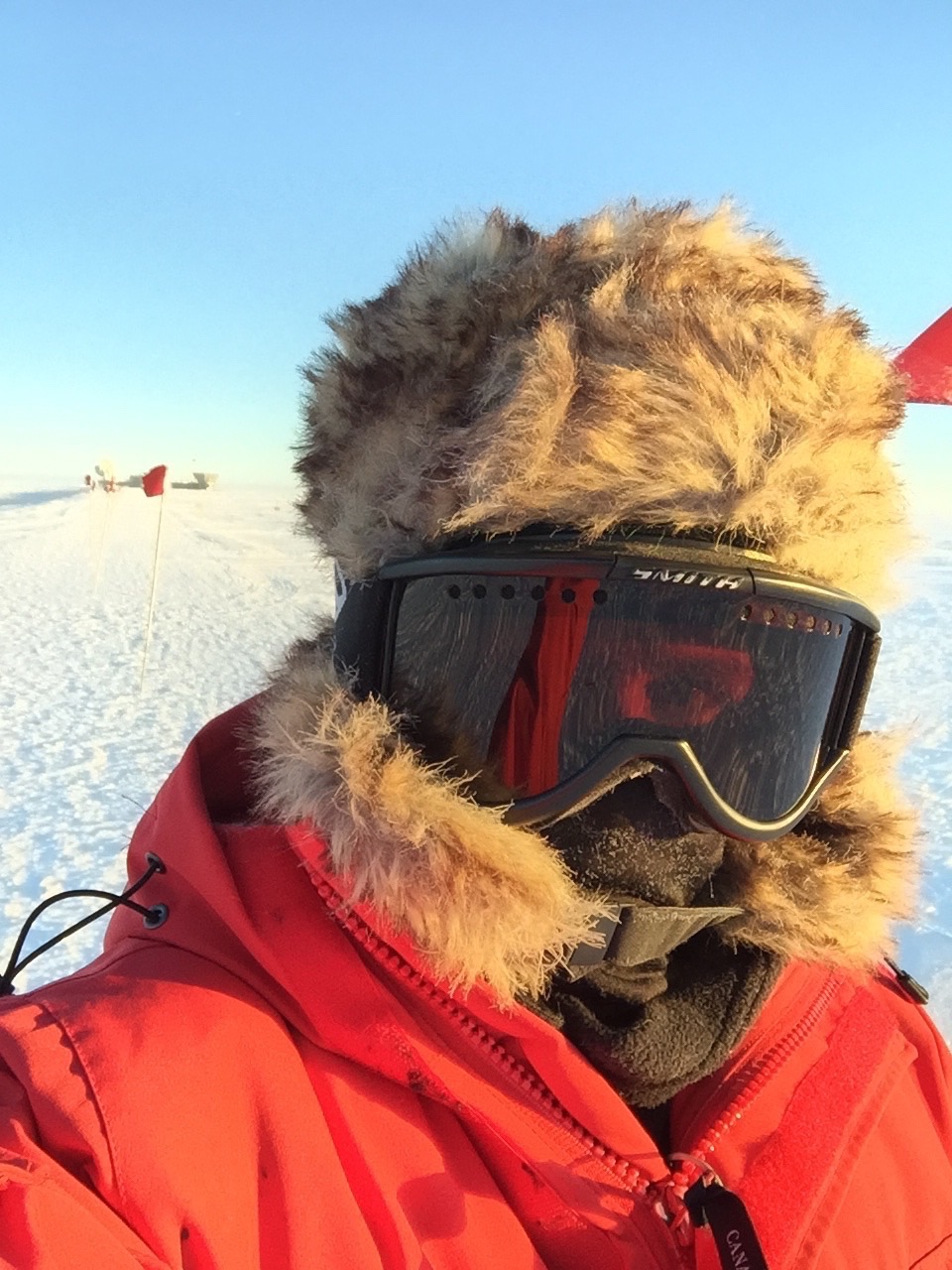
I am currently working as a “winterover” on the South Pole Telescope (SPT) onsite at the South Pole in Antarctica for January-November 2016. No one can arrive or leave from February-October due to it being too cold for planes to land. In the winter months, 40-50 people (this year it’s 48) stay over to keep the base and scientific operations running.
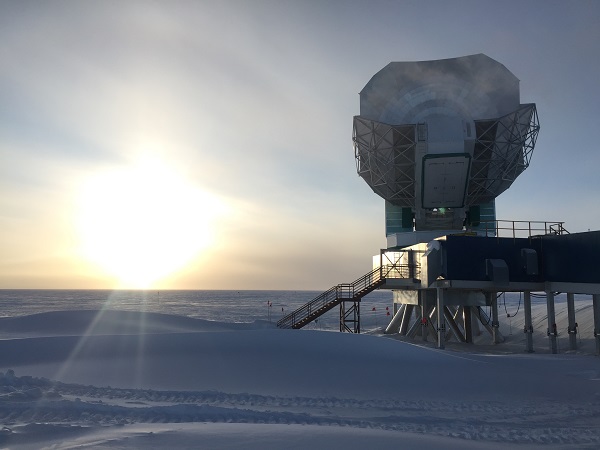
SPT is a telescope operating in the microwave, submillimeter and millimeter wavelengths, designed to observe the cosmic microwave background (CMB) radiation, a relic of the Big Bang that we can see today. We can use these observations to point to the location and properties of galaxy clusters early on in the universe and to improve our understanding of cosmology.

SPT is in Antarctica, at the South Pole, as it is high and dry, with little diurnal variation due to the fact the sun rises and sets but once a year. Water vapor in the atmosphere would interfere with its observations of the CMB. The South Pole has an average temperature of around -50ºC. Last year it had a high of -18.1ºC and a low of -78ºC. -78ºC is -108.4ºF or, in the scientific temperature scale Kelvin (which is 0 at absolute 0) 195K. Currently, the sun has set for 6 months and the temperature is at -47C and dropping.

How on earth did I get here? Well, I took a plane. But more specifically, I did an undergraduate degree in Physics at MIT with a concentration in cosmology. I also became fascinated with computation, and picked up a major in computer science as well. When I went to graduate school, for Theoretical Physics, I focused on computational astrophysics, the best of both worlds, focusing on simulations of the formation of galaxy clusters and on constraining models of dark energy.
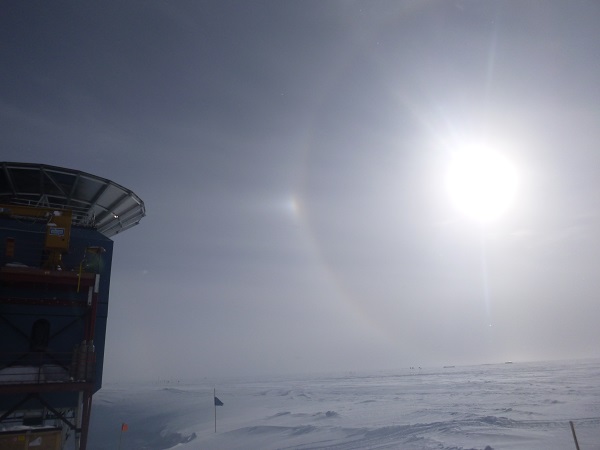
When I started my postdoc at Caltech, in numerical relativity, I got wind of an opportunity to work in Antarctica with SPT, and also saw to it that I could arrange a leave were I to get the job so I could return to Caltech and pick up where I left off. A few friends of mine from MIT had been involved with the South Pole Telescope, and had good things to say, and they were looking with someone who had both skills in computation and in physics. After several interviews, visiting the collaboration, passing a psychological screening, I was on my way.
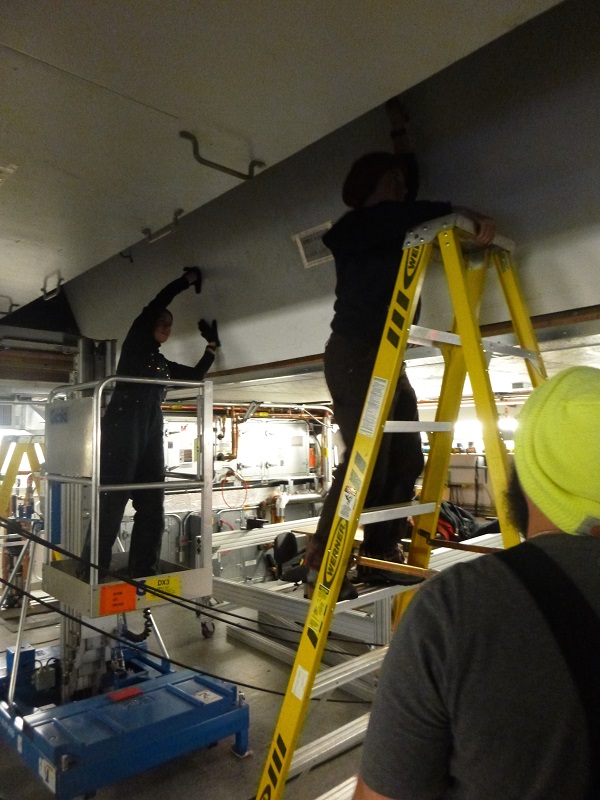
I spent January and February training with last year’s SPT winterovers and now I, together with winterover Amy Lowitz, a Ph.D. student in physics, am responsible for the telescope. Coming from a theory and computation background, it is a real privilege to be working with such a powerful piece of equipment collection important scientific data. Although the majority of the parts were brought down in military grade C-130 aircraft, the telescope is impressively large, with a 10m primary dish, and set against the serene Antarctic landscape the working environment can’t be beat.
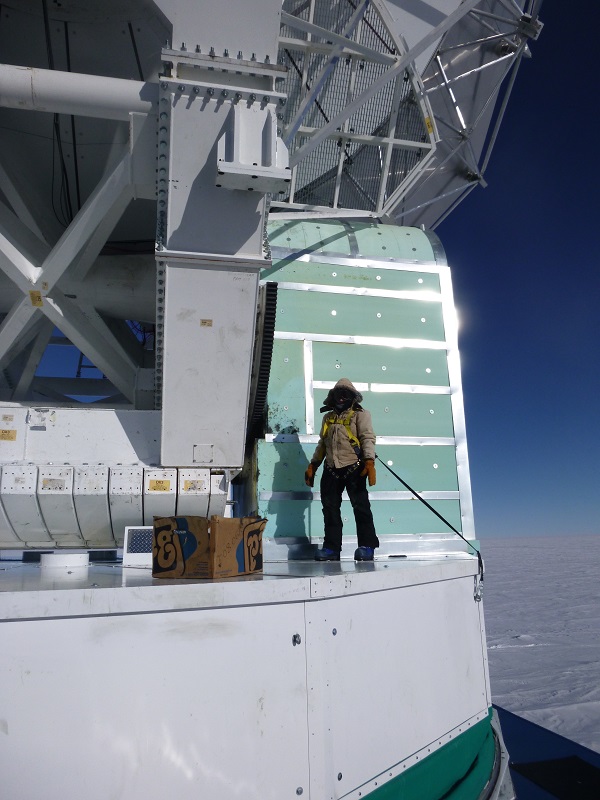
My day to day work includes scheduling observations, keeping track of observation quality, working on and improving data analysis projects, attending collaboration meetings via phone, scheduled mechanical maintenance such as greasing telescope gears, and debugging issues that come up. We also must, at least once a day, walk out the the telescope, which is a few kilometers from the station, to check on operations on site. I also participate in volunteer activities on station including cleaning duties and being a member of the Medical Emergency Response team. Everyone, from the scientists to the machinist to the station manager, takes part in such extra duties.

As an Astronomer I’ve gotten to travel the world in search of truth and beauty in the Universe and I can testify it is a great career, and one that keeps getting better. Unlike some careers, where at a certain point things become routine, astronomy and astrophysics gets more interesting and rewarding the longer you are involved. In the next decades, with space becoming more accessible and many excellent experiments coming online, we can look forward to even more innovation and interplay between theory and experiment leading us unexpected places.
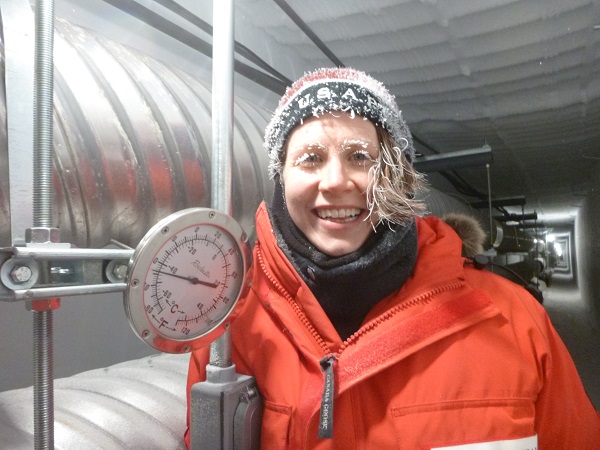
I’m hoping more young people choose to study physics and astrophysics, and with so many great MOOCs those who have other careers already can explore what astronomy has to offer, appreciate breakthroughs, and even contribute via crowdsourced astronomy efforts such as Galaxy Zoo. If you’re reading this blog, you’re already on the right track.

What’s next for me? Space I hope! I’ve applied, for the second time, to be a NASA astronaut. In the meantime I’m looking forward to continue my research from sunny Pasadena at welcoming Caltech next year. But for now, warm greetings from the coldest place on Earth!
 Read Christine's biography, here. Photo by Chris Fortuna.
Read Christine's biography, here. Photo by Chris Fortuna.







